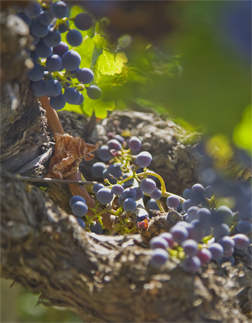
Philosophy

Winemaking Philosophy
Sequoia Grove is a family-owned winery founded in 1979 in a 110-year old barn beneath a grove of Sequoia trees right in the heart of Napa Valley in Rutherford. Rutherford ranks among the very finest AVAs in Napa Valley and produces some of the world's best Cabernet Sauvignon. With a moderately warm climate and long summer days offset by early morning fog, Rutherford Cabernet Sauvignon is often known for opulent fruit, earthy flavors, balanced acidity, and smooth tannins.The Sequoia Grove Winery Estate property encompasses 24 acres in the heart of the Rutherford AVA and another 50 acres just across the Napa River to the east. In addition, we are proud to have long working relationships with renowned vineyard owners spanning the entire Napa Valley from Coombsville in the south to Calistoga in the north.
Our diversity of Napa Valley vineyard sites allows us to showcase a specific terroir and sense of place in our vineyard designate wines and provide complexity and balance in our Winemaker Series and Napa Valley wines.

Viticultural Philosophy
After years of farming and studying the soils of Rutherford, viticulturist Jake Terrell has a pretty good idea of what it takes to grow great Cabernet Sauvignon. The right combination of soil, site and climate come first and foremost, but it’s what’s done with those resources that elevates simply good Cabernet to world-class Cabernet Sauvignon.
The Rutherford AVA is known for its temperate climate of warm afternoons, cooler evenings and marine fog. Pair that with its Rutherford Dust (the Cabernet-loving combination of soils according to Andre Tchelistcheff), and you have ideal growing conditions for Cabernet Sauvignon and its blending varietals.
But even with the fortune of great soils like Rutherford Dust, extensive analysis on each site is still necessary. We look at everything from the types and health of soils, to the geography, drainage, sun exposure and more. Our two Rutherford vineyards are a perfect example of why this is necessary. The marine sedimentary soils at our estate are different from the more mineral-rich volcanic soils of our Tonella property, and even though they are both within the Rutherford AVA, each imparts vastly different characteristics to the wine.
We divide each site into blocks based on the soil's characteristics, and then select the rootstocks and clones that are best for each block. But instead of planting each block to a single clone, we divide each block in half again and plant each to a different clone – each with its own irrigation system. This diversifies our crop, allows us to control vine vigor and naturally lessens the risk of pests or disease.
Having the luxury of our own highly experienced vineyard team walking and working the vineyards every day is also a huge element of our success. Many have worked for us for more than a decade and know the vineyards, vines, soils, and surrounding environments like the backs of their hands—and therefore know how to keep everything in balance.
After four decades, we’ve found that using a simple trellising system and a wider 8 x 5 spacing plan produces the best result. Even though this means fewer vines per acre, it gives the vines room to grow, offers the right mix of ample light and canopy shade to avoid sunburn while allowing the fruit to ripen properly, and allows us to monitor the vines and respond to any problems promptly.
Keeping our vineyards balanced involves keeping pests and problems out. When a concern does arise, we prefer to fight fire with fire—or in our case, pests with pests. Instead of relying on pesticide spray, we’ll use predator bugs to resolve a pest issue. This method takes 2-3 weeks, rather than a day, but by keeping chemicals out of the vineyard today, we can help ensure a healthier vineyard and environment tomorrow.
